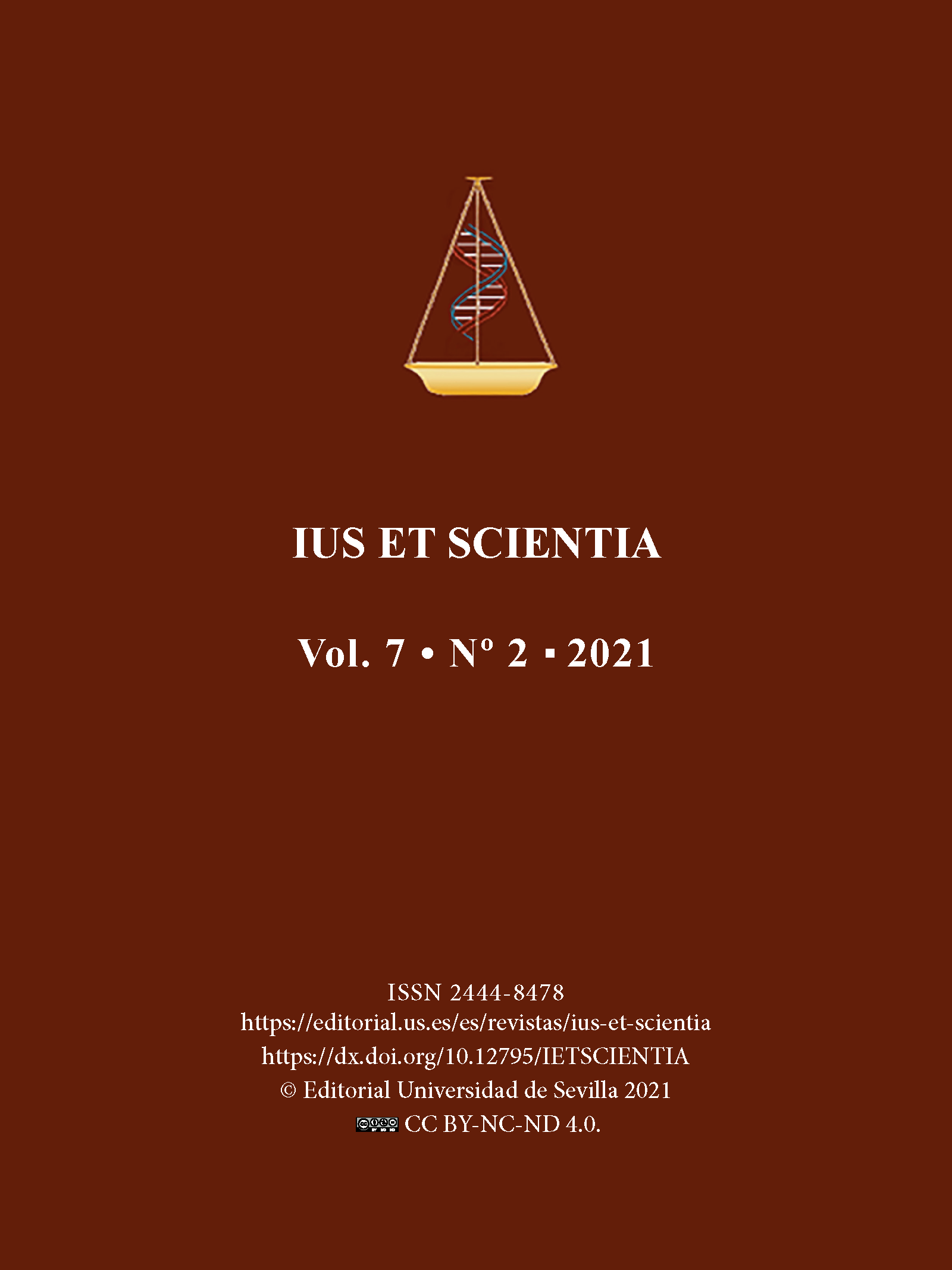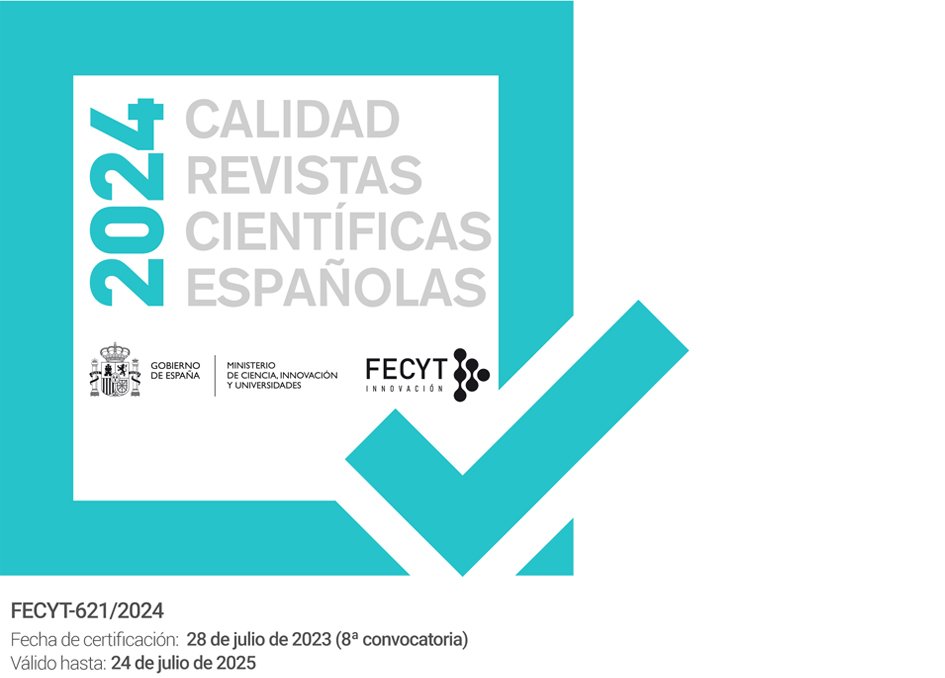Legal challenges for robots and autonomous artificial intelligence systems in the healthcare context with special reference to Covid-19 health crisis
DOI:
https://doi.org/10.12795/IETSCIENTIA.2021.i01.09Keywords:
Artificial Intelligence, Healthcare robot, COVID-19 health crisis, Health LawAbstract
It is no longer far from reality that machines will not only help, but in many cases replace humans in their roles as caregivers, healthcare professionals, doctors and specialists, as well as in the decision-making process in the healthcare sector. Indeed, the field of health and care is an undisputed arena for the spread of robotic innovation. Artificial Intelligence has changed the architecture of the world, and this extends to the world of healthcare. This status quo will generate - or rather is already generating, given that robotics is not the future, but is already a reality - a series of multiple and multidisciplinary novel issues for health law and policy. This paper focuses on exploring the main legal considerations that arise, highlighting the need for various reforms of legal doctrine and regulatory structures. Given that
Downloads
References
Alsamhi, S. & Lee, B. (2020). Blockchain for Multi-Robot Collaboration to Combat COVID-19 and Future Pandemics. IEEE Access. Doi: 10.1109/ACCESS.2020.3032450.
Andreu Martínez, B. (2019). Robótica en el ámbito sanitario y de los cuidados: implicaciones para la privacidad y la protección de datos. Dilemata, Revista Internacional de Éticas Aplicadas, (30).
Ataz López, J. (2020). Daños causados por las cosas: una nueva visión a raíz de la robótica y de la inteligencia artificial. In M.J. Herrador Guardia (Coord.). Derecho de daños. Francis Lefebvre.
Atienza Macías, E. (2020). Las respuestas del Derecho a las nuevas manifestaciones de dopaje en el deporte. Dykinson.
Atienza Macías, E. & Vieito Villar, M. (2020). La inteligencia artificial en el contexto sanitario: algunas reflexiones éticas y jurídicas. Especial referencia al papel de los robots ante la pandemia de la Covid-19 y su alcance en las personas mayores. In I. Alkorta Idiakez (Dir.) & E. Atienza Macías (Coord.). Soluciones tecnológicas para los problemas ligados al envejecimiento: cuestiones éticas y jurídicas. Dykinson.
Barrio Andrés, m. (2019). Derecho de los robots. La Ley.
Bogost, i. (2013). What are sports videogames?. In M. Consalvo, K. Mitgutsch & A. Stein (Eds.). Sports videogames. Routledge.
Chikish, Y., Carreras, M. & García, J. (2019). ESports: ¿Una nueva era para el sector del deporte, y un nuevo impulso a la investigación sobre economía del deporte?. Papeles de Economía Española, (159), 294-313.
Dolic, Z., Castro, R. & Moarcas, A. (2019). Robots in healthcare: a solution or a problem?. Study for the Committee on Environment, Public Health, and Food Safety, Policy Department for Economic, Scientific and Quality of Life Policies. European Parliament.
Douissard, J., Hagen, M.E. & Morel, P. (2019). The da Vinci Surgical System. In C.E. Domene, K.C. Kim, R. Vilallonga Puy & p. Volpe (Eds.). Bariatric Robotic Surgery. Springer.
Ercilla García, J. (2020). La robotización como “causa técnica” de despido objetivo. Aranzadi.
European Group on Ethics in Science And New Technologies-EGE (2018). Statement on artificial intelligence, robotics and ‘autonomous’ systems. European Commission.
Ethical Aspects of Cyber-Physical Systems - Scientific Foresight study, EPRS- European Parliamentary Research Service Scientific Foresight Unit-STOA (June 2016). https://www.europarl.europa.eu/RegData/etudes/STUD/2016/563501/EPRS_STU%282016%29563501_EN.pdf
Fosch-Villaronga, E. (2020). Robots, Healthcare, and the Law. Regulating automation in personal care. Routledge.
García Micó, T.G. (2014). Litigación Asociada a la cirugía robótica con el Da Vinci (Da Vinci’s Robotic Surgery Litigation). InDret, 4.
García Portero, R. (2018). Los robots en la sanidad. In M. Barrio Andrés (Dir.), Derecho de los robots (p. 208). Wolters Kluwer.
García-Prieto Cuesta, J. (2018). ¿Qué es un robot?. In M. Barrio Andrés (Dir.). Derecho de los robots. Wolters Kluwer.
Hechenbleikner, E.M., & Jacob, B.P. (2019). Medicolegal Issues in Robotic Surgery. In S. Tsuda & O.Y. Kudsi (Eds.). Robotic-Assisted Minimally Invasive Surgery. Springer.
Henkel, A.P., Čaić, M. and Blaurock, M. & Okan, M. (2020). Robotic transformative service research: deploying social robots for consumer well-being during COVID-19 and beyond. Journal of Service Management, 31(6), 1131-1148. https://doi.org/10.1108/JOSM-05-2020-0145
Kerr, I.R., Millar, J. and Corriveau, N. (2017). Robots and Artificial Intelligence in Health Care. In J. Erdman, V. Gruben and E. Nelson (Eds.). Canadian Health Law and Policy, Canadian Health Law and Policy, 5ª ed. LexisNexis Canada.
Leenes, R., Palmerini, E. & Koops, B. et ál. (2017). Regulatory challenges of robotics: some guidelines for addressing legal and ethical issues. Law, Innovation and Technology, 9(1), 14.
Mayer-Schönberger, V., & Cukier, K. (2013). Big data: A revolution that will transform how we live, work, and think. Houghton Mifflin Harcourt.
Miah, A. (2004). Genetically modified athletes: biomedical ethics, gene doping and sport. Routledge.
Minero Alejandre, G. (2020). Robots y derecho civil. Algunas cuestiones a tener en cuenta desde la perspectiva europea. In F. Bueno De Mata (Dir.), Fodertics 8.0: estudios sobre tecnologías disruptivas y justicia (pp. 55-56). Comares.
Navas Navarro, S. and Camacho Clavijo, S. (2019). El ciborg humano. Comares.
Palmerini, E. (2017). Robótica y derecho: sugerencias, confluencias, evoluciones en el marco de una investigación europea. Revista De Derecho Privado, (32), 55. https://doi.org/10.18601/01234366.n32.03
Pérez Triviño, J.L. (2013). The challenges of modern sport to ethics: from doping to cyborgs. Lexington Books.
Ranadivé, V. (2014). Applying big data thinking to sports. Bloomberg.
Romeo Casabona, C.M., Guillén, E. & Jerez, J.M. et ál (2020). Inteligencia artificial en salud: retos éticos y legales. Fundación Instituto Roche.
Tsikala Vafea, M., Atalla, E. & Georgakas, J. et ál (2020). Emerging technologies for use in the study, diagnosis, and treatment of patients with COVID-19. Cellular and Molecular Bioengineering, 13(4), 249-257.
VV.AA. (2018). Los robots y el Derecho. In C. Rogel Vide (Coord.). Reus.
Vallor, S. (2011). Carebots and Caregivers: Sustaining the Ethical Ideal of Care in the Twenty-First Century. Philosophy and Technology, 24(3). https://doi.org/10.1007/s13347-011-0015-x
Van Wynsberghe, A. (2015). Healthcare Robots, Ethics, Design and Implementation. Ashgate.
Woods, R. (2015). Social issues in sport, 3rd Edition. Human Kinetics.
Yang, G.Z., Nelson, B.J. & Murphy, R.R. et ál (2020). Combating COVID-19—The role of robotics in managing public health and infectious diseases. Science Robotics, 5(40). doi: 10.1126/scirobotics.abb5589.
Published
How to Cite
Issue
Section
License
Those authors being published in this journal agree to the following terms:
- Authors retain their copyright and they will guarantee to the journal the right of first publication of their work, which will be simultaneously subject to license recognition by Creative Commons that allows others to share such work provided it is stated the author’s name and his first publishing in IUS ET SCIENTIA.
- Authors may take other non-exclusive distribution license agreements version of the published work (e.g. deposit in an institutional digital file or publish it in a monographic volume) provided it is stated the initial publication in this journal.
- It is allowed and encouraged that Author s disseminate their work via the Internet (e. g. institutional digital files or on their website) prior to and during the submission process, which can lead to interesting exchanges and to increase citation of the published work.
- Abstract 349
- pdf 530
- html 37





